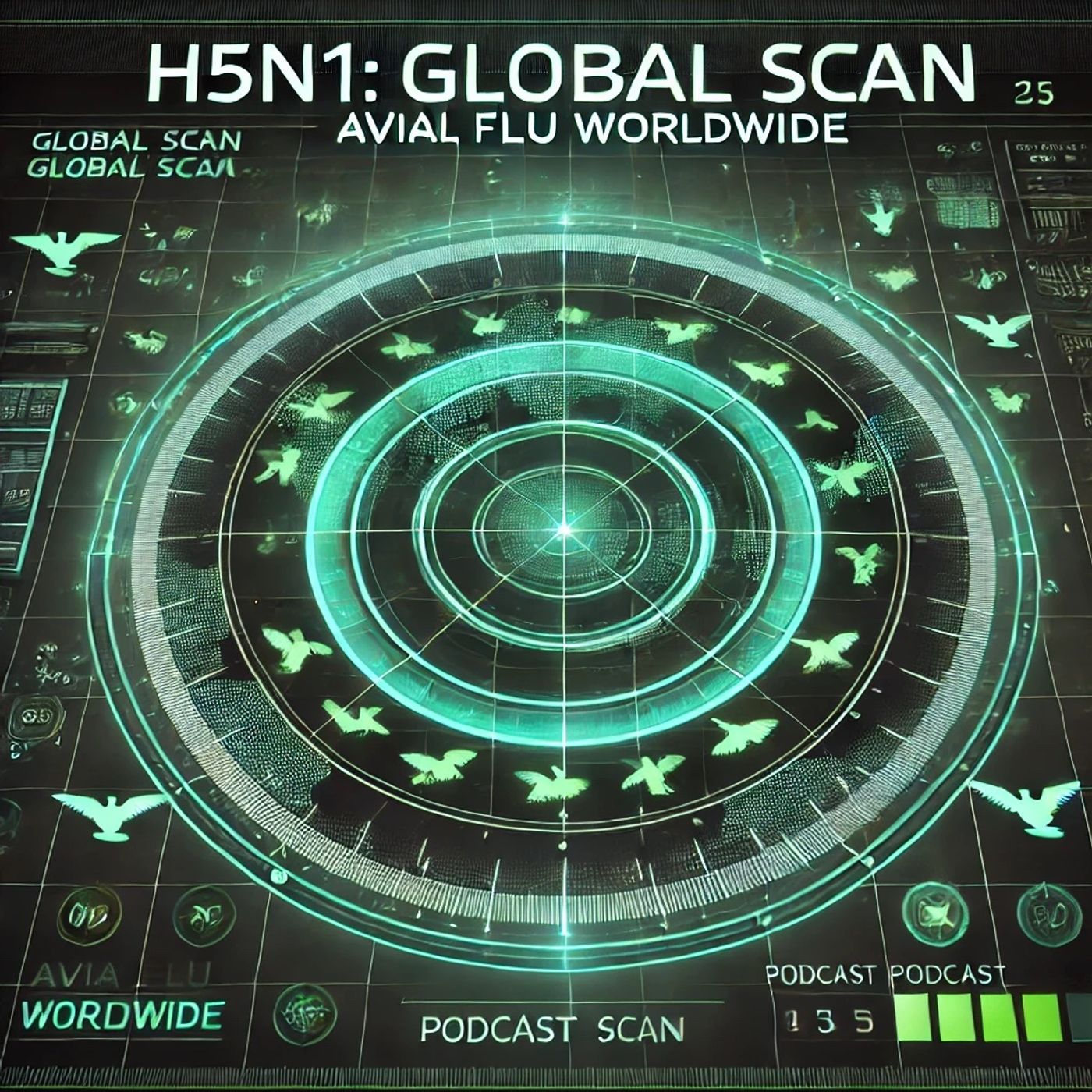Podcast Episode Details
Back to Podcast Episodes
H5N1 Avian Flu Spreads Globally: Impacts on Birds, Mammals, and Humans Across Continents in 2025
This is H5N1 Global Scan: Avian Flu Worldwide, your international focus podcast. I’m your host. Today, we examine the evolving global impact of H5N1 avian influenza.
Since 2020, H5N1 has surged across continents, affecting birds, mammals, and people alike. Outbreaks have now been reported in every continent except Australia. According to the World Health Organization, by July 2025, nearly a thousand human cases have been reported globally since 2003, with a high fatality rate, notably in Asia and the Americas.
Let’s break it down continent by continent. In Asia, particularly in Cambodia and India, there’s been a disturbing uptick in human cases and fatalities, especially among children exposed to backyard poultry. Cambodia recently saw a spike in cases with 11 children infected in just six months. In India, human deaths have also been confirmed in 2025, while in China and Vietnam, large-scale poultry losses have persisted.
Africa continues to see outbreaks in poultry across several countries, impacting food security and cross-border poultry trade. In Europe, the United Kingdom detected not only poultry infections but also spillover into sheep, underscoring the ever-changing risk landscape and complexity of H5N1 surveillance. South America has also grappled with new outbreaks in wild birds, poultry, and occasional spillover into mammals and backyard farms, as seen in Peru and Mexico.
In North America, the United States has faced continual outbreaks among wild birds, commercial poultry, and even dairy cattle. According to the CDC, millions of birds have been culled, causing food supply disruptions and egg shortages. The USDA has responded with a billion-dollar strategy to curb spread and aid affected farmers, while ongoing surveillance is the strongest in the world. Canada and Mexico also report sporadic outbreaks, and Mexico logged its first human death from H5N1 this year.
Globally, the World Health Organization and the Food and Agriculture Organization stress that the public health risk remains low, but they emphasize the importance of vigilance, robust surveillance, and biosecurity. The two agencies lead international coordination, rapid information exchange, and technical support for affected countries. The WHO’s latest guidance assesses current risk for most people as low but identifies moderate risk for farm and poultry workers.
International trade has not escaped disruption. Border closures and poultry import bans have affected producers and supply chains from Asia to Europe and the Americas, with particular impact on small and medium farms. Smuggling and illegal trade persist risks across borders.
Research initiatives are surging worldwide. In the US and Europe, new vaccines for poultry and targeted vaccines for high-risk humans are under development, some already in field trials. Meanwhile, Asia leads in the genetic surveillance of H5N1 strains, providing critical early-warning data for global health authorities.
Comparing national approaches, the US and EU are investing heavily in surveillance, rapid culling, and vaccine stockpiles. Some Asian nations, facing challenges with smallholder farms and live markets, focus on community engagement and compensation schemes for culling. Africa and Latin America, with fewer resources, rely on international support for monitoring and laboratory capacity.
Thanks for joining this week’s episode of H5N1 Global Scan: Avian Flu Worldwide. Stay informed, stay safe, and come back next week for more global coverage. This has been a Quiet Please production. For more, check out QuietPlease.ai.
For more http://www.quietplease.ai
Get the best deals https://amzn.to/3ODvOta
Published on 2 weeks, 3 days ago